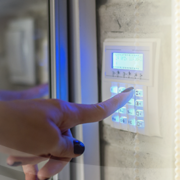Cybersecurity: The Definitive Guide to Getting it Right
To implement the best cybersecurity solutions for your business, you’ll first need to answer the following question: “What is cybersecurity?” Don’t worry, you aren’t being quizzed.
Cybersecurity is a broad term to describe efforts to protect computers, networks, programs, and/or data from unauthorized access or attacks.
To build an approach for protecting your business, you need to know about the specific types of digital threats that cybersecurity practices should combat. We found a few industry statistics to help give you a better understanding of how a solid cybersecurity solution keeps your business safe.
Cybersecurity vs. Everything
It can be overwhelming to create a cybersecurity plan without knowing what exactly you’re up against. When building a solution to protect your network and your data, you want to make sure that your managed services provider (MSP) helps create a plan that protects against all of the following:
1. Cyberattacks
For some people, the thought of suffering a cyberattack is like hitting some sort of evil lottery – they know it happens, they just don’t believe it will happen to them. Unfortunately, the facts tell a different story. A leading industry report found that 75.6% of organizations encountered at least one successful cyberattack within the past 12 months.
Maybe that’s because there are several types of cyberattacks, including malware, phishing, and ransomware. While each type of cyberattack works in a different way, the end goal is always to disrupt your business, which will compromise your data and cause irreparable financial and reputational damage.
Cyberattacks have impacted business on a global level, and some predict that by 2021, cyberattacks will cost businesses $6 trillion annually. That number is so big it’s hard to fathom just what sort of impact that has on the average business.
Unfortunately, the micro-view is just as foreboding. On an individual level, one study showed that cyberattacks can cost businesses as much as $40,000 per hour.
So how does a cyberattack do that much damage in such a short time? A malware worm may infect an unprepared network, overloading it with traffic and causing the network to shut down. Downtime is extremely expensive, costing small businesses over $8,000 per hour if your employees aren’t working and customers are not getting service.
Another frequent incident is an employee downloading malware via email. The virus can easily spread through the computer – and even across your network – destroying the hard drive in the process. This leads to high equipment replacement costs, not to mention lost data and productivity.
2. Human Error
If you are worried about cyberattacks after that last section, you may want to sit down when you hear about human error. While cyberattacks work from the outside in, human error from the inside can be just as detrimental.
When people make uneducated errors, they run the risk of inviting cyberattacks and losing time, money and data. From 20 years of collecting incident data, Uptime Institute has determined that human error (i.e., bad operations) is responsible for approximately 70% of all data center incidents.
From spilling coffee on machines to clicking on unfamiliar links from unknown or cleverly disguised email senders, and even using unauthorized software or flash drives on your company network, people working for you introduce a lot or risks that you cannot always prevent.
That’s why experts can guide you to create and implement the policies, tools and training to minimize the opportunities for risky employee activity to threaten your operation.
3. Insider Threat
Of course, not all human error is accidental. Insider threat continues to be a huge area of concern in businesses. 74% of business organizations feel vulnerable to insider threat.
Disgruntled or unscrupulous staff may take advantage of their access to compromise or use equipment, data or other company property for their own purposes.
Part of a solid cybersecurity solution means utilizing special tools and policies to keep your network guarded from the inside. This can include implementing customized access controls, network monitoring, and more.
The Secret to Cybersecurity
The security best practices for your business should definitely not be an out-of-the-box solution. Your business is unique. That means you demand a unique approach to preventing and combating cyberattacks, human error, and insider threats.
The best cybersecurity solutions should include a hybrid of network monitoring, education, virus protection, access control and more.

Here at TFE, we are proud to provide a cybersecurity solution custom tailored to meet your business needs. If you’d like more information on how to implement a solid cybersecurity solution, we’d love for you to reach out.
Feel free to contact us with any questions you have. We’re happy to help. No strings attached.
















